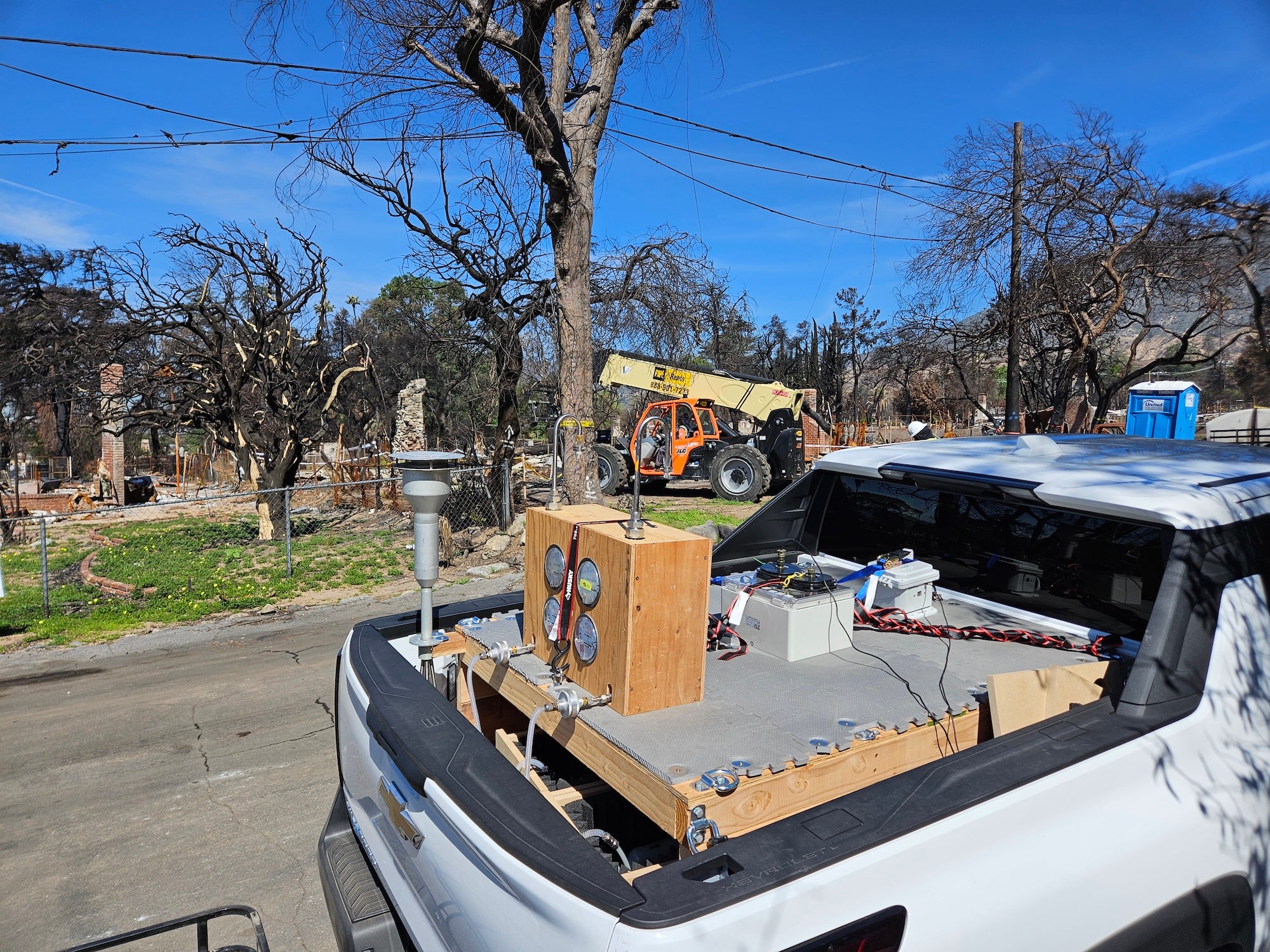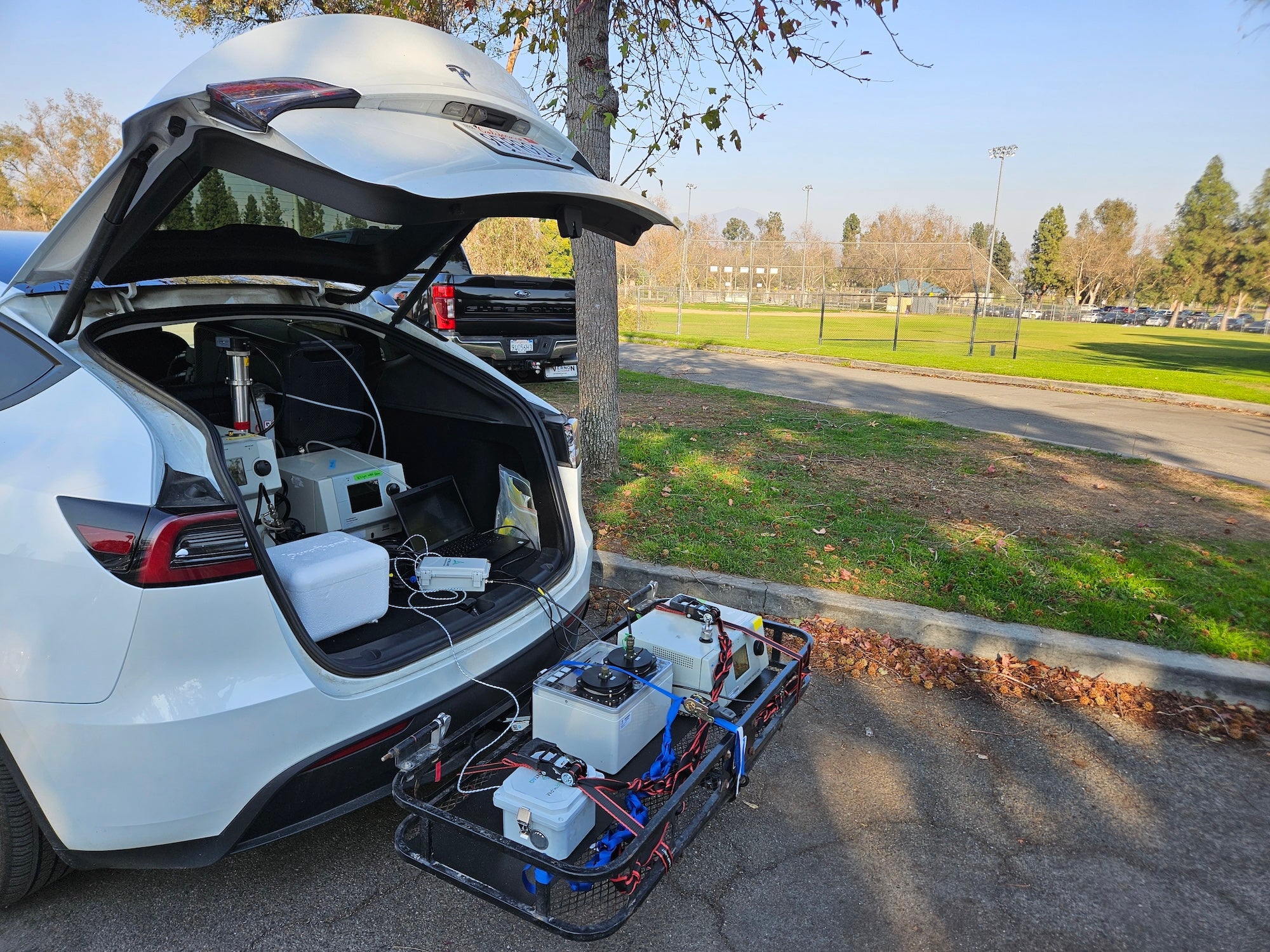Air quality scientists have detected elevated levels of hexavalent chromium and silver in air samples collected from the debris cleanup zones for the Eaton and Palisades wildfires, which occurred January 2025 in Los Angeles County.
In a preprint paper led by the University of California, Davis, preliminary findings show hexavalent chromium, or chromium-6, levels in outdoor air averaged 13.7 ng/m3 in Altadena and Pacific Palisades, the two cities heavily impacted by the fires. Silver concentrations averaged 1.6 g/m3, with more than 90% of that material in tiny nanoparticles, which are less than 1/1000th the width of a human hair. The air samples were collected in March and April 2025.
The citywide average levels measured were below the official limits set by the National Institute for Occupational Safety and Health and U.S. Environmental Protection Agency for worker health, but above screening levels for outside air. When screening levels are exceeded, they warrant further investigation.
Additional real-time measurements suggest that hotspot concentrations of total chromium may exceed 100 ng/m3 - far greater than the citywide average - but those measurements were not specifically for hexavalent chrome.
The research is done in collaboration with the Los Angeles Fire Human Exposure and Long-Term Health Study (LA Fire HEALTH Study), which is a 10-year, multi-institutional study to better understand the pollutants and public health risks of the 2025 wildfires in L.A. (Read the consortium's data brief on the preliminary findings.)
The findings have not yet been peer reviewed and are being shared early to inform affected communities.
"The most surprising finding is the nanoparticle form of the hexavalent chromium," said lead author Michael Kleeman, professor with the UC Davis College of Engineering and the Air Quality Research Center. "We expected to see hexavalent chrome in particles larger than 100 nanometers, but to find them in particles smaller than 56 nanometers is really unique and raises concerns about potential health effects."


Mobile monitoring for heavy metals
Hexavalent chromium, or chromium-6, is a toxic metal and carcinogen that can impact the lungs and is associated with asthma, bronchitis and lung cancer. While silver is generally safe, its nanoparticles can cause inflammation and cell damage. The full health impact of inhaling these toxicants is uncertain, but the authors say caution is warranted "given that nanoparticles can easily cross cell membranes and circulate throughout the body."
Kleeman used an electric mobile monitoring truck equipped with air quality measurement tools to sample airborne particle concentrations in or near the debris cleanup zones of Eaton and Palisades fires in March and April 2025. Working with colleagues at UC Davis and UCLA, the scientists then sorted and analyzed the particles to detect different elements and metals.
"The levels of hexavalent chromium detected warrant further field monitoring because this metal is a powerful respiratory irritant and a known human carcinogen," said co-author Michael Jerrett, a professor of environmental health sciences at UCLA's Fielding School of Public Health. "The levels detected are unlikely to increase lifetime cancer risk for people frequenting the burn areas if the levels return to normal urban background in the short term, but if these elevated levels persist, they could present serious health risks for residents and workers in the burn areas."
Jerrett said the small size of these particles is particularly concerning because they can penetrate deeply into the lungs, translocate into the bloodstream, and potentially reach every organ system in the body.
Reducing exposure
Additional testing and funding are needed to determine the extent and levels of chromium-6 and nanosilver in the air, soil and water around the burn areas, and to verify sources of exposure.
"Electronics, solar panels and flame retardants often contain engineered silver and chromium nanoparticles," Jerrett said. "At this point we don't know the specific source. To prevent these exposures in the future, understanding the source is crucial."
According to the California Department of Public Health and LA Fire HEALTH Study consortium, people can minimize their exposure to these nanoparticles by using HEPA filters, using MERV-13 or higher filters in central HVAC systems and replacing them as needed, and wearing a KN-95 or N-95 mask when cleaning homes damaged by fire.
The LA Fire HEALTH Study is led by researchers from Cedars-Sinai; Harvard T.H. Chan School of Public Health, the Keck School of Medicine of University of Southern California, Stanford University, UCLA's Fielding School of Public Health, UCLA Health, UC Davis, UC Irvine, University of Texas at Austin and Yale University.






